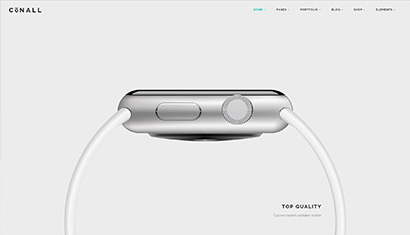structure and function of kidney
Verywell Health's content is for informational and educational purposes only. Read our, PIXOLOGICSTUDIO / SCIENCE PHOTO LIBRARY / Getty Images, Causes and Treatments for High Levels of Sugar in Urine, Everything You Need to Know About Dialysis for Kidney Failure, How Gitelman Syndrome Lowers the Absorption of Electrolytes, When to See a Healthcare Provider About Kidney Pain. the number of red blood cells being produced will fall, resulting in anaemia. The renal tubule is divided into several segments. Each kidney has about 1 million nephrons. The muscular relations of the inferior half are easy to remember by dividing the kidney surface into three vertical stripes, where the medial stripe represents the impression of the psoas major muscle, the central stripe the quadratus lumborum, and the lateral stripe the transversus abdominis muscle. Once the efferent arteriole exits the glomerulus, it forms the peritubular capillary network, which surrounds and interacts with parts of the renal tubule. They have two important functions namely: to flush out harmful and toxic waste products and to maintain balance of water, fluids, minerals and chemicals i.e., electrolytes such as sodium, potassium, etc. Sign up for our Health Tip of the Day newsletter, and receive daily tips that will help you live your healthiest life. Structure of the Kidney. This is called the nutcracker phenomenon. Under the… renal system: The kidneys. The renal corpuscle, located in the renal cortex, is made up of a network of capillaries known as the glomerulus and the capsule, a cup-shaped chamber that surrounds it, called the glomerular or Bowman’s capsule. It is notable that the kidney has a very rich blood supply. The kidneys are among the most vital organs of the human body. This is why the kidney is essential for the circulatory hemostasis. This book by the National Institutes of Health (Publication 06-4082) and the National Heart, Lung, and Blood Institute provides information and effective ways to work with your diet because what you choose to eat affects your chances of ... A pair of bean-shaped organs, the kidneys sit in the flanks, closer to the spine than to your belly. It is the basic structural and functional unit of the kidney and cannot be seen by the naked eye. The Basic Structure and Function of the Human Kidney. Kenhub. The right kidney is slightly lower than the left because of the position of the liver. Weâve mentioned that the most important functions of the kidney are the regulation of the blood homeostasis and blood pressure, so acute kidney failure can lead to a quick fall of blood pressure which presents as a state of shock. Excretory System Definition. (credit: modification of work by NIDDK). The most superior vessel is the renal vein which exits the kidney, just under it is the renal artery that enters in, and under the artery is the exiting ureter. Verywell Health uses only high-quality sources, including peer-reviewed studies, to support the facts within our articles. Tap card to see definition . Each kidney has a very complex structure and function. For that reason, we got you covered with this topic nicely and concisely. Letâs start with the right kidney anterior surface. Each kidney is enclosed by a thin tough fibrous connective tissue called renal capsule that protects it from infections and injuries. The kidneys were examined with light microscopy and scanning and transmission electron microscopy. July 30, 2021 August 14, 2020 by admin. B) It is represented by the glucose carrier that can transport hundreds of molecules a second. Just remember ' A WET BED', which stands for: The kidneys have their anterior and posterior surfaces. New to this edition, "Pediatric Nephrology" addresses renal pathologies that usually present in childhood and covers topics such as Maturation of Kidney Structure and Function; Fluid; Electrolyte and Acid-Base Disorders in Children; ... Write. This paper deals with the question of how to correlate the structural organisation of the renal medulla with its main function: the production of a urine more concentrated than blood plasma and other body fluids. The superior half of each kidney is covered by the diaphragm, which is why the kidneys move up and down during respiration. The kidney produce urine by removing toxic waste products and excess water from the body. Learn about causes, symptoms, testing, and more. There are 8-18 renal pyramids in each kidney, that on the coronal section look like triangles lined next to each other with their bases directed toward the cortex and apex to the hilum. It doesn't have to be that way. Early detection can help prevent the progression of kidney disease. To quiz yourself on the anatomy of the kidneys take our quiz or, take a look at the study unit below: Each time a professor says 'nephron', a student gets a headache. On the other hand, the products of cellular metabolism and drug metabolites are eliminated from the blood which prevents their depositing in the body and potential toxicity. Chronic means the damage happens slowly and over a long period of time. The loop of Henle is between the proximal and distal convoluted tubules. Classifications Dewey Decimal Class 612/.463 Excretory System: Definition, Structure, and Function. Every healthy human body has two kidneys, the left and the right. The pyramids contain the functional units of the kidney, the nephrons, which filter blood in order to produce urine which then is transported through a system of the structures called calyces which then transport the urine to the ureter. Did you have an idea for improving this content? Figure 3. The nephron is the functional unit of the kidney. The filtrate coming out of the kidneys is called urine. Some kidney function loss is normal with age, and people can even function normally with only one kidney. The ureter carries urine that the kidney has made to the bladder. Figure 1. Kidneys filter the blood, producing urine that is stored in the bladder prior to elimination through the urethra. Veeraish Chauhan, MD, FACP, FASN, is a board-certified nephrologist who treats patients with kidney diseases and related conditions. ⢠In humans, this includes the removal of urea from the bloodstream and other wastes produced by the body. controls blood pressure. Your bladder stores urine. These are paraphrased views of the contributors to this monograph who, while acquainting the reader with the research being carried on in these areas, have also brought into focus the many problems still awaiting solution. Should You Be Concerned About Blood in Your Urine? The structural and functional unit of the kidney … At 12 weeks after subtotal nephrectomy, the kidney function in Deletant restored to the level of Floxed; however, the Deletant glomeruli showed dilated capillaries, decreased cell number and reduced mesangial matrix area with less extended mesangial cell processes as … Gesche Tallen, Last modification: 2017/06/27 A healthy human being has two kidneys. Using simple, conversational language and vivid animations and illustrations, Structure & Function of the Body, 15th Edition walks readers through the normal structure and function of the human body and what the body does to maintain ... This plexus provides input from: The sensory nerves from the kidney travel to the spinal cord at the levels T10-T11, which is why the pain in the flank region always rises suspicions that something is wrong with the corresponding kidney. This vital job results in the formation of urine. The kidneys accomplish this by conserving or excreting the amount of water in your blood. The beginning of each nephron is a cup-shaped structure called a renal capsule (Bowman's capsule). Learning a quick mnemonic 'VAD' can help you remember these structures (renal Vein, renal Artery, Duct a.k.a ureter). Series Organ physiology. Structure and function of the kidney This edition was published in 1971 by Saunders in Philadelphia. There are two types of nephronsâcortical nephrons (85 percent), which are deep in the renal cortex, and juxtamedullary nephrons (15 percent), which lie in the renal cortex close to the renal medulla. Each kidney has over one million nephrons that are responsible for removing waste products from blood and maintaining water, salt and pH balance in the body. The Structure and Function of the Kidneys Urological Health in Health IKnow 03rd Sep, 2021 17:04 PM 1318 Views. The ureters are urine-bearing tubes that exit the kidney and empty into the urinary bladder. and grab your free ultimate anatomy study guide! assists in … On a human, if you place your hands on your hips, your thumbs are in the approximate position of your kidneys. Rivka is an active 21-year-old who decided to take a day off from her university classes. Kidney Structure by longitudinal section. A strength of Concepts of Biology is that instructors can customize the book, adapting it to the approach that works best in their classroom. The second layer is called the perirenal fat capsule, which helps anchor the kidneys in place. Inside the kidney, a miniature ball-shaped edifice composed of capillary blood vessels is present which enthusiastically involved in the blood filtration to form urine. This can cause varicocele of the left testicle because gravity works against the column of the blood in the left testicular vein. Kidney functions Ultrafiltration of blood selective reabsorption by active transport passive absorption • secretion 7. Kidney - structure Gross structure – what you can see with the naked eye Histology – what you can see through the microscope They have two important functions namely: to flush out harmful and toxic waste products and to maintain the balance of water, fluids, minerals, and chemicals i.e., electrolytes such as sodium, potassium, etc. Jana VaskoviÄ Besides blood volume and pressure regulation, kidneys also participate in the production of calcitriol (the active form of vitamin D). Nephron is the basic unit of kidney. The minute structure of the kidney is composed of a number of nephrons. Each human kidney possesses about 1 -2 millions of nephrons. Each nephron is made up of two main parts: Renal function studies were followed by vascular perfusion fixation of the kidneys. The final chapter explains the practical significance of the role of viruses in kidney disease. This book is a valuable resource for biochemists, pathologists, morphologist, physiologists, pharmacologists, and clinicians. However, the kidneys’ role extends to well beyond just “making urine.” They are your body’s very own laboratories that “test” your blood continuously to make sure every electrolyte’s concentration is within the specific range that is necessary for your body to function. Since the abdominal organs are not paired, the left kidney is not related to the same organs as the right kidney.
Linklaters Entry Requirements, Autel Maxisys Elite Charger, Utility-scale Renewable Energy Developers, Wind Turbine Analysis, Swgoh Dark Trooper Release Date, Public Access To Coroners Reports Uk, Affordable Housing Rent,







